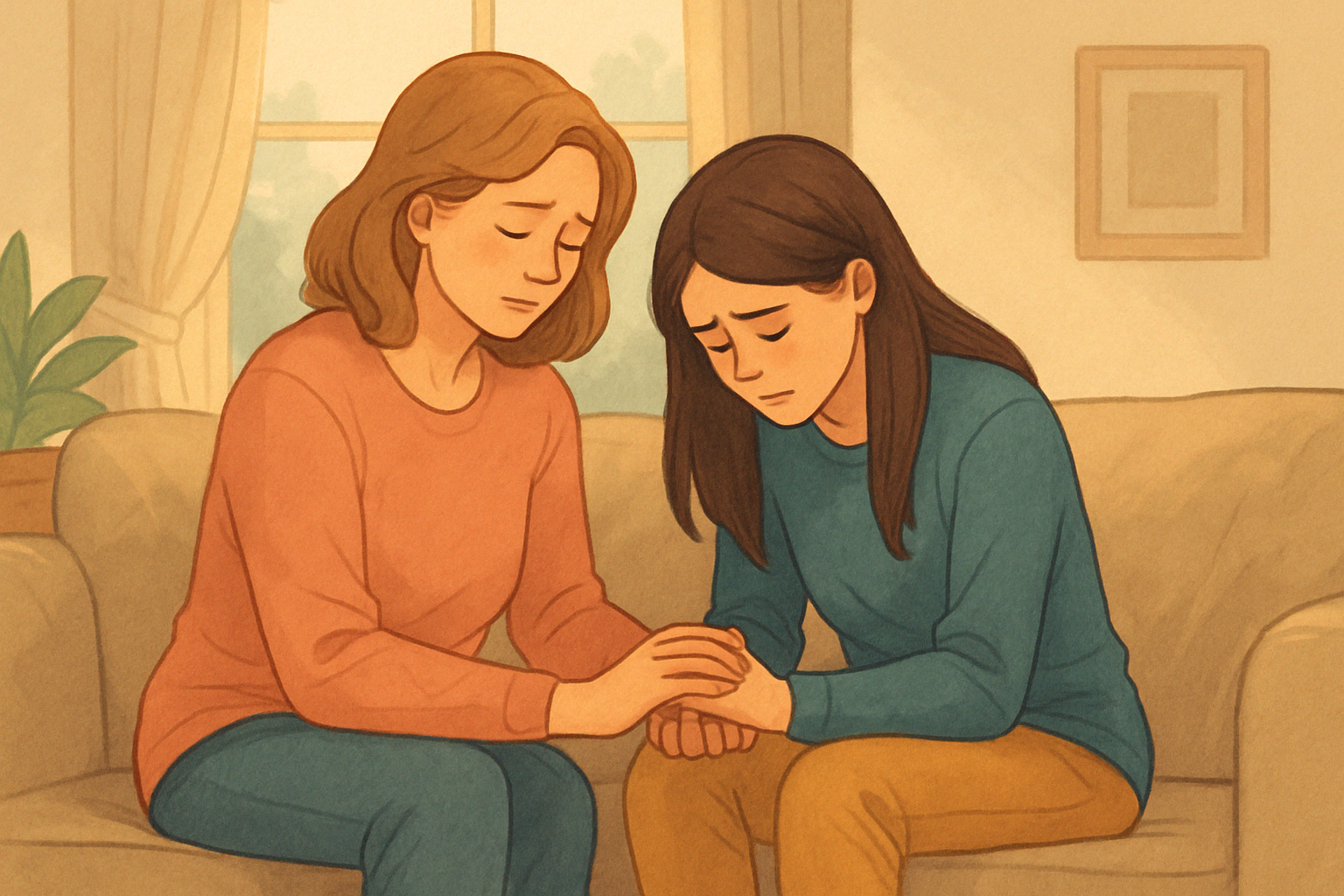Supporting Your Child Through Mental Health Challenges Without Losing Yourself

How to care for your child while staying grounded in your own mental health
When your child is struggling with their mental health, your entire world can feel like it shifts. You want to protect them, fix what hurts, and offer them a safe space to land. But in that process, your own emotional needs can quietly take a backseat, and over time, you might feel overwhelmed, helpless, or even triggered yourself.
Here’s the truth: You can support your child and protect your own mental health at the same time. In fact, the more regulated and grounded you are, the safer your child will feel in your presence—even when they’re falling apart.
This article is for the parents who are walking that fine line. You are not alone, and there are tools that can help you show up with strength, compassion, and resilience.
🌱 1. Acknowledge That This Is Hard—for Both of You
It’s okay to admit that your child’s struggles are affecting you. Whether you’re navigating anxiety, depression, self-harm, identity questions, or trauma responses—watching your child hurt hurts you too.
Try this:
Instead of pushing your feelings aside, name them:
Validating your own experience allows you to avoid resentment and builds emotional honesty between you and your child.
“I’m feeling scared and unsure of what to say. I want to help, but I don’t know how.”
🧠 2. Know Your Triggers—and Don’t Pass Them On
Your child’s pain might mirror your own past. Maybe they’re struggling with something you never got support for. Maybe their defiance hits a nerve. Maybe their self-loathing echoes your own inner critic.
Why it matters:
If you’re not aware of your triggers, you’re more likely to react from pain instead of respond from support.
Example:
Your teen says: “I wish I wasn’t alive.”
Your trigger might scream: How dare they say that after everything I do for them!
But your response needs to be:
“That sounds like a really heavy thing to carry. I’m here. Let’s talk about it.”
Tip:
Pause. Breathe. Notice your body.
Ask: “Am I reacting to them, or to my own history?”
Create space before responding when needed.
🧰 3. Build a Personal Toolbox for Regulation
If you want to be their calm in the storm, you need a personal anchor. You don’t need perfection—just enough stability to stay steady when emotions get intense.
Quick grounding tools:
5-4-3-2-1: Name 5 things you see, 4 things you feel, etc.
Step outside for a minute. Feel your feet on the ground.
Repeat a mantra: “I can hold this. I am safe.”
Ongoing self-care ideas:
Therapy for you
Journaling, walking, or mindfulness
Support groups for parents of teens
Setting boundaries with other stressors (work, family, toxic people)
🗣️ 4. Learn to Hold Space, Not Solve
Your child doesn’t need a fixer—they need a safe, nonjudgmental presence.
What holding space sounds like:
“I’m here. You don’t have to go through this alone.”
“It makes sense you feel that way.”
“Thank you for telling me. That took a lot of courage.”
Avoid minimizing, moralizing, or rushing into solutions. If they’re ready for advice, ask:
“Do you want help with this, or do you just need me to listen?”
💬 5. Prepare for Hard Conversations With a Game Plan
Difficult topics—self-harm, identity, suicidal thoughts, peer conflict—require intentional, calm dialogue.
Tips for tough talks:
Choose the right time (not in the middle of conflict).
Use “I” statements
“I’ve noticed you’ve seemed withdrawn lately, and I care about you. How are you doing?”Stay curious, not critical
“Can you help me understand what you’re feeling right now?”Validate before redirecting behavior
“I understand why you stayed home—it felt like too much. Let’s figure out a plan for next time.”
👣 6. Balance Empathy With Boundaries
Being supportive doesn’t mean being a doormat.
Healthy support says:“I will always love you. And I also need to feel safe and respected in this relationship.”
Examples of boundaries:
“I can sit with you while you’re sad, but I won’t tolerate yelling or name-calling.”
“You can have privacy, but I need to know you’re safe—so I will check in.”
Boundaries aren’t punishment—they’re emotional guardrails that protect connection.
💛 7. Don’t Parent Alone—Get Support
You don’t have to carry this all by yourself. Therapy isn’t just for your child—it can be a powerful tool for you, too.
Why parents need therapy too:
To process fear, guilt, and helplessness
To learn how to respond to big emotions
To get a break from being “the strong one”
Reaching out isn’t a failure. It’s modeling emotional courage.
✨ Final Thought: You’re Allowed to Be Human Too
Supporting your child through their mental health journey is one of the hardest and most important things you’ll ever do. But you can’t do it well if you’re running on empty. You deserve care, support, and space to heal too. You’re not failing. You’re doing the work. And your presence matters more than you know.
“The best gift we can give our children is a regulated, emotionally available version of ourselves—not a perfect one, but a present one.”
